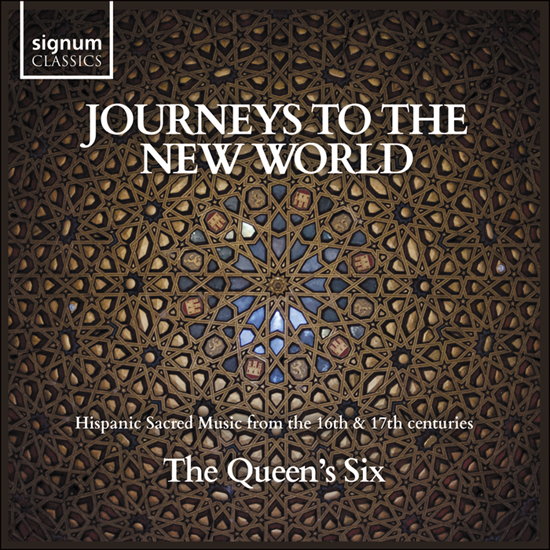Journeys to the New World
Hispanic Sacred Music from the 16th & 17th centuries
The Queen’s Six
Signum Classics SIGCD626. 66’23

The Queen’s Six are all based at Windsor Castle where they are Lay Clerks at St George’s Chapel. They promote themselves as providing a “unique style of entertainment” with a repertoire that “extends far beyond the reach of the choir stalls: from austere early chant, florid Renaissance polyphony, lewd madrigals and haunting folk songs, to upbeat Jazz and Pop arrangements”. Perhaps fortunately, on this recording they remain firmly in the choir stalls for some Renaissance New World polyphony dating from the mid-16th century to c1700.
Cristóbal de Morales (c.1500 – 1553) Regina caeli laetare à 6; O sacrum convivium
Hernando Franco (1532 – 1585) Salve Regina à 5; Christus factus est
Tomás Luis de Victoria (c.1548 – 1611) Vidi speciosam; O quam gloriosum
Francisco Guerrero (1528 – 1599) Trahe me post te; Beatus Achacius
Alonso Lobo (1555 – 1617) Versa est in luctum; O quam suavis est
Juan Gutierrez de Padilla (c.1590 – 1664) Circumdederunt me; Versa est in luctum
Francisco López Capillas (1614 – 1674) In horrore visionis; Tantum ergo
Miguel Mateo de Dallo y Lana (c.1650 – 1705) Laudate Dominum
Of the eight composers represented on this recording, four (Morales, Victoria, Guerrero and Lobo) remained in Spain while their music travelled to Mexico, three (Franco, Padilla, and Dallo y Lana) worked in Spain before emigrating to the New World, and one (López) was born in the colonies to Spanish parents. Padilla presided at Puebla Cathedral, the most elaborate musical foundation in the Americas at the time. López Capillas was Padilla’s assistant at Puebla before moving to Mexico Cathedral where Franco had earlier been in charge of the music.
Although the music covers a broad period, the style is firmly in the rather austere style of Renaissance polyphony. Although there are many examples of music from the New World that assimilated local styles (with many excellent recordings available), that genre is not represented on this recording. The small choral forces, and the lack of instrumental accompaniment sets this recording apart from most of the influential recordings of New World music over the past decades. The vocal style of the six singers is rather sparse, which generally suits the mood of most of the pieces. Occasionally the upper voices are rather too prominent for balance but, overall, the vocal texture is appropriate.
It was recorded, not in St George’s Chapel Windsor, but in a priory in Ascot. The acoustic is very generous, reflecting the scale of Mexico and Puenla cathedrals. I did wonder if more variety in the music chosen might have made for a more interesting programme – many of the pieces sounded rather similar in style and tone. More information can be found here. Musical extracts can be heard here.
